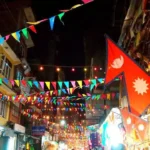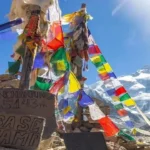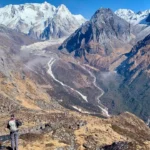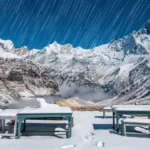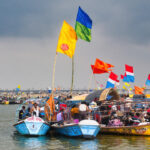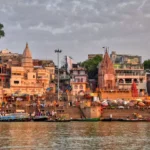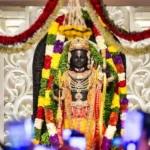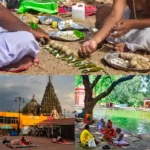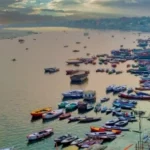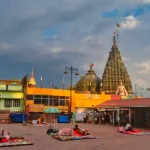The Historical Significance of Patan Durbar Square
Patan Durbar Square isn’t just beautiful—it’s deeply rooted in Nepal’s royal and religious past. This ancient city square has been at the heart of cultural and political life in the Kathmandu Valley for over a thousand years, acting as both a royal residence and a spiritual sanctuary.
📜 Ancient Origins
While the exact origins of Patan (Lalitpur) are somewhat mythical—some trace it back to Emperor Ashoka in the 3rd century BCE—the city rose to prominence during the Licchavi period (circa 400–750 CE). However, the square as we know it today took shape under the Malla kings, who ruled from the 14th to 18th centuries and transformed the area into an architectural masterpiece.
During this golden era, Patan became a centre of art, learning, and spiritual devotion, particularly for the Newar people, the Indigenous inhabitants of the Kathmandu Valley. The Malla kings commissioned temples, palaces, and public spaces that reflected a fusion of Hindu and Buddhist influences, a unique cultural blend that still defines the square today.
👑 The Malla Legacy
King Siddhi Narsingh Malla (ruled 1618–1661) was especially instrumental in elevating Patan’s grandeur. He initiated the construction of some of the square’s most iconic structures, including parts of the royal palace complex and key temples like Krishna Mandir, built entirely from stone.
Under his reign and that of his successors, the square became a symbol of power, devotion, and artistic excellence. Every element—from the delicate wood carvings to the golden finials atop temple spires—was crafted to impress both gods and guests.
🧭 A Crossroads of Faith
Unlike other durbar squares in the Kathmandu Valley, Patan is notable for its harmonious coexistence of Hindu and Buddhist monuments. You’ll find temples dedicated to Lord Krishna, Shiva, and Bhimsen just steps away from stupas and shrines honoring the Buddha and Bodhisattvas.
This religious diversity reflects the Newar way of life, where Buddhist and Hindu practices are often blended, and festivals are celebrated by all, regardless of faith.

Patan Durbar Square isn’t just a relic of the past—it’s a living timeline. Walking through it is like flipping through pages of Nepal’s rich, layered history, where every carving and courtyard has a story to tell.
Architectural Highlights You Can’t-Miss
If Patan Durbar Square is the soul of Lalitpur, its architecture is the beating heart. Every temple, statue, and palace here is a masterclass in Newar craftsmanship, blending intricate woodwork, ornate metal detailing, and timeless stone carvings. Whether you’re into history, photography, or just love beautiful things, these highlights deserve your full attention.
1. Krishna Mandir (Temple of Lord Krishna)
🗓️ Built in 1637 by King Siddhi Narsingh Malla
Arguably the crown jewel of Patan Durbar Square, Krishna Mandir stands out with its entirely stone construction—a rare feat in Nepalese temple design. It’s built in the Shikhara style, more common in northern India than the Kathmandu Valley.
What makes it so special?
- Its walls are etched with epic scenes from the Mahabharata and Ramayana.
- Devotees flock here during Krishnastami, the celebration of Krishna’s birth.
📸 Tip: Visit at sunset when the temple glows golden in the fading light.
2. Bhimsen Temple
🗓️ Built in 1680
Dedicated to Bhimsen, the strongman of the Mahabharata, this temple is easily recognized by its three gilded windows that shine against the brick façade.
Highlights:
- Known for its striking metalwork and rich symbolism.
- Bhimsen is not just a mythological figure here—he’s revered as a patron of traders, making this temple especially important for local merchants.
3. Vishwanath Temple (Shiva Temple)
🗓️ Constructed in 1627
This temple is a visual treat and spiritual hotspot, dedicated to Lord Shiva. Its roof is adorned with erotic carvings—a feature often misunderstood but deeply symbolic in Tantric tradition.
Standout features:
- Guarded by stone elephants at its entrance.
- A bronze Nandi (sacred bull) statue sits facing the shrine.
It’s a perfect example of how religious devotion and artistic freedom coexisted during the Malla era.
4. Taleju Bhawani Temple
🗓️ Built in 1640
Towering above the square, this five-tiered pagoda is dedicated to Taleju Bhawani, the personal goddess of the Malla kings.
What’s unique:
- This temple is only opened to the public once a year during the Dasain festival.
- Its exclusivity and spiritual aura make it a sacred powerhouse of the square.
Every structure in Patan Durbar Square tells a story—not just of kings and gods, but of the artisans who chiselled and carved with unmatched skill. These architectural gems aren’t just beautiful—they’re alive with centuries of culture, belief, and identity.
The Royal Courtyards: Hidden Beauty Behind the Walls
Step beyond the temples and bustling plaza, and you’ll find a quieter, almost mystical side of Patan Durbar Square—the royal courtyards. These inner sanctums once served as private spaces for kings and queens, sacred rituals, and royal ceremonies. Today, they offer visitors a peaceful escape and a deeper look into Nepal’s regal and spiritual legacy.
There are three main courtyards (or chowks) in the Patan palace complex, each with its own personality and charm.
1. Mul Chowk – The Heart of the Palace
📍 “Mul” means main, and this is the central courtyard.
Mul Chowk is the oldest and most prominent of the three courtyards. Surrounded by richly carved wooden doors and pillars, this space was once the epicentre of royal life and religious devotion.
🔹 Highlights:
- Home to several shrines dedicated to Taleju Bhawani, the powerful tutelary goddess of the Malla kings.
- Used for Tantric rituals and royal ceremonies, often closed to the public except during certain festivals.
- The architecture reflects a perfect blend of symmetry and sacred geometry—truly the spiritual soul of the square.
2. Sundari Chowk – The Courtyard of Grace
📍 “Sundari” means beautiful, and it lives up to its name.
This courtyard is like stumbling into a secret garden of stone and serenity. Though smaller and less visited than Mul Chowk, Sundari Chowk is no less majestic. It’s especially famous for Tusha Hiti, a stunning sunken bath that once served the royals.
🔹 Highlights:
- Tusha Hiti is decorated with exquisite stone carvings of gods, serpents, and mythical creatures.
- The space was ritually purified and considered sacred, used by the king himself for holy baths.
- It’s a masterpiece of hydraulic engineering and spiritual symbolism.

3. Keshav Narayan Chowk – Where the Past Meets the Present
📍 This courtyard now forms the entrance to the Patan Museum.
Keshav Narayan Chowk merges ancient elegance with modern storytelling. Named after the Keshav Narayan Temple, a shrine to Lord Vishnu, this area has been beautifully restored and now houses one of Nepal’s finest museums.
🔹 Highlights:
- Keshav Narayan Temple, built in the classical tiered style, stands at the centre.
- The courtyard is part of the Patan Museum, where you can explore Nepalese art, iconography, and cultural history.
- The restoration work here is award-winning, offering a prime example of how heritage and modern use can coexist beautifully.
Each courtyard within Patan Durbar Square invites you to slow down, look closer, and imagine the lives once lived within these royal walls. They’re not just relics of the past—they’re windows into the spirit, art, and philosophy of Nepal’s golden age.
Cultural Events and Festivals: When Patan Comes Alive
Patan Durbar Square isn’t just about ancient temples and historic courtyards—it’s also a stage for living traditions. Throughout the year, this square pulses with music, rituals, processions, and joyful chaos as locals celebrate a rich calendar of religious festivals.
Whether you plan your trip around one of these events or happen to stumble upon one, experiencing a festival here is like stepping into a centuries-old story being told in real time.
🕺 Krishnastami: The Birth of Lord Krishna
📅 When? August (according to the lunar calendar)
🛕 Where? Krishna Mandir
This is the biggest event in the square, drawing thousands of devotees to Krishna Mandir. On this night, the temple becomes a glowing beacon of devotion, and the air is filled with bhajans (devotional songs), incense, and the buzz of late-night celebrations.
🔹 What to Expect:
- Long lines of worshippers offering flowers, oil lamps, and sweets.
- Kids dressed up as little Krishnas and Radhas.
- A magical nighttime vibe with the temple beautifully lit up.
📸 Pro tip: Arrive early to snag a good photo spot—this is one of the most photogenic nights in Patan.
🛕 Rato Machhindranath Jatra: The God Who Travels
📅 When? Usually April–May
🛕 Where? Starts in Pulchowk, passes through Patan Durbar Square
This epic chariot festival honours Rato Machhindranath, the god of rain and plenty. Locals build a massive wooden chariot (seriously, it’s huge!) and haul it through the streets in one of the longest and oldest festivals in the Kathmandu Valley.
🔹 Why it’s special:
- It blends Hindu and Buddhist traditions, just like Patan itself.
- Locals risk everything to climb and steer the giant chariot—it’s intense!
- The energy is electric, with drums, singing, and thousands of people in the streets.
🙏 Daily Rituals & Local Traditions
Even if you’re not visiting during a major festival, Patan Durbar Square is never dormant. Early mornings see locals doing pujas (prayers), lighting oil lamps, and placing marigold garlands on shrines. Monks chant in nearby monasteries, and you might hear conch shells being blown at dusk.
🔹 Don’t miss:
- Watching priests perform rituals at Taleju Temple from a respectful distance.
- Joining locals for a quiet moment at a shrine or stupa.
- Exploring nearby vihars (Buddhist courtyards) that often host their ceremonies.
From massive chariot parades to peaceful daily prayers, the cultural rhythm of Patan Durbar Square is what makes it truly unforgettable. It’s not just a destination—it’s a living, breathing festival of faith and community.










